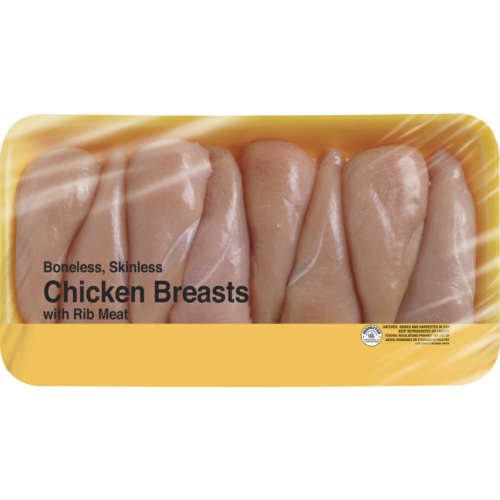
A study from the U.S. Department of Agriculture (USDA) reveals that individuals are putting themselves at risk of illness when they wash or rinse raw poultry.
“Cooking and mealtime is a special occasion for all of us as we come together with our families and friends,” said Dr. Mindy Brashears, the USDA’s Deputy Under Secretary for Food Safety. “However, the public health implications of these findings should be of concern to everyone. Even when consumers think they are effectively cleaning after washing poultry, this study shows that bacteria can easily spread to other surfaces and foods. The best practice is not to wash poultry.”
The results of the observational study showed how easy bacteria can be spread when surfaces are not effectively cleaned and sanitized. The USDA is recommending three easy options to help prevent illness when preparing poultry, or meat, in your home.
- Significantly decrease your risk by preparing foods that will not be cooked, such as vegetables and salads, BEFORE handling and preparing raw meat and poultry.
- Of the participants who washed their raw poultry, 60 percent had bacteria in their sink after washing or rinsing the poultry. Even more concerning is that 14 percent still had bacteria in their sinks after they attempted to clean the sink.
- 26 percent of participants that washed raw poultry transferred bacteria from that raw poultry to their ready to eat salad lettuce.
- Thoroughly clean and sanitize ANY surface that has potentially touched or been contaminated from raw meat and poultry, or their juices.
- Of the participants that did not wash their raw poultry, 31 percent still managed to get bacteria from the raw poultry onto their salad lettuce.
- This high rate of cross-contamination was likely due to a lack of effective handwashing and contamination of the sink and utensils.
- Clean sinks and countertops with hot soapy water and then apply a sanitizer.
- Wash hands immediately after handling raw meat and poultry. Wet your hands with water, lather with soap and then scrub your hands for 20 seconds.
- Destroy any illness causing bacteria by cooking meat and poultry to a safe internal temperature as measured by a food thermometer.
- Beef, pork, lamb and veal (steaks, roasts and chops) are safe to eat at 145°F.
- Ground meats (burgers) are safe to eat at 160°F.
- Poultry (whole or ground) are safe to eat at 165°F.
- Washing, rinsing, or brining meat and poultry in salt water, vinegar or lemon juice does not destroy bacteria. If there is anything on your raw poultry that you want to remove, pat the area with a damp paper towel and immediately wash your hands.
“Everyone has a role to play in preventing illness from food,” said Administrator Carmen Rottenberg of USDA’s Food Safety and Inspection Service (FSIS). “Please keep in mind that children, older adults, and those with compromised immune systems are especially at risk. Washing or rinsing raw meat and poultry can increase your risk as bacteria spreads around your kitchen, but not washing your hands for 20 seconds immediately after handling those raw foods is just as dangerous.”
The U.S. Centers for Disease Control and Prevention estimates that millions of Americans are sickened with foodborne illnesses each year, resulting in roughly 128,000 hospitalizations and 3,000 deaths.
More information about this study is available in an executive summary.


Chattooga Opinions
The Joy of the Journey: The Hope of Christmas

Bulloch Public Safety
Several Arrested in Bulloch for Narcotics Trafficking After Citizen Complaints

Bulloch Public Safety
12/19/2025 Booking Report for Bulloch County

Chattooga Local News
Trump signs executive order reclassifing marijuana

Bulloch Public Safety
11/24/2025 Booking Report for Bulloch County

Bulloch Public Safety
12/12/2025 Booking Report for Bulloch County

Bulloch Public Safety
12/01/2025 Booking Report for Bulloch County

Bulloch Public Safety
12/16/2025 Booking Report for Bulloch County

Bulloch Public Safety
12/11/2025 Booking Report for Bulloch County





